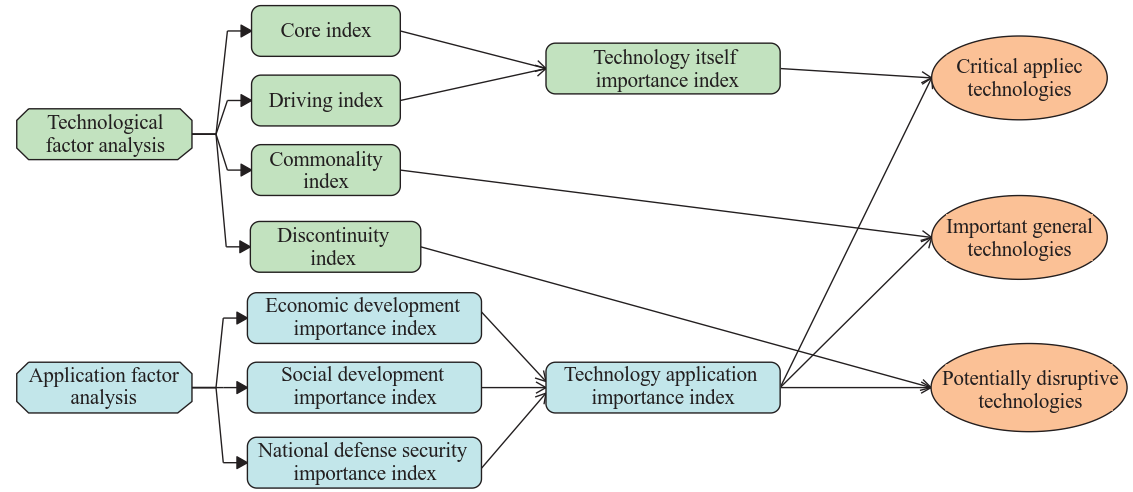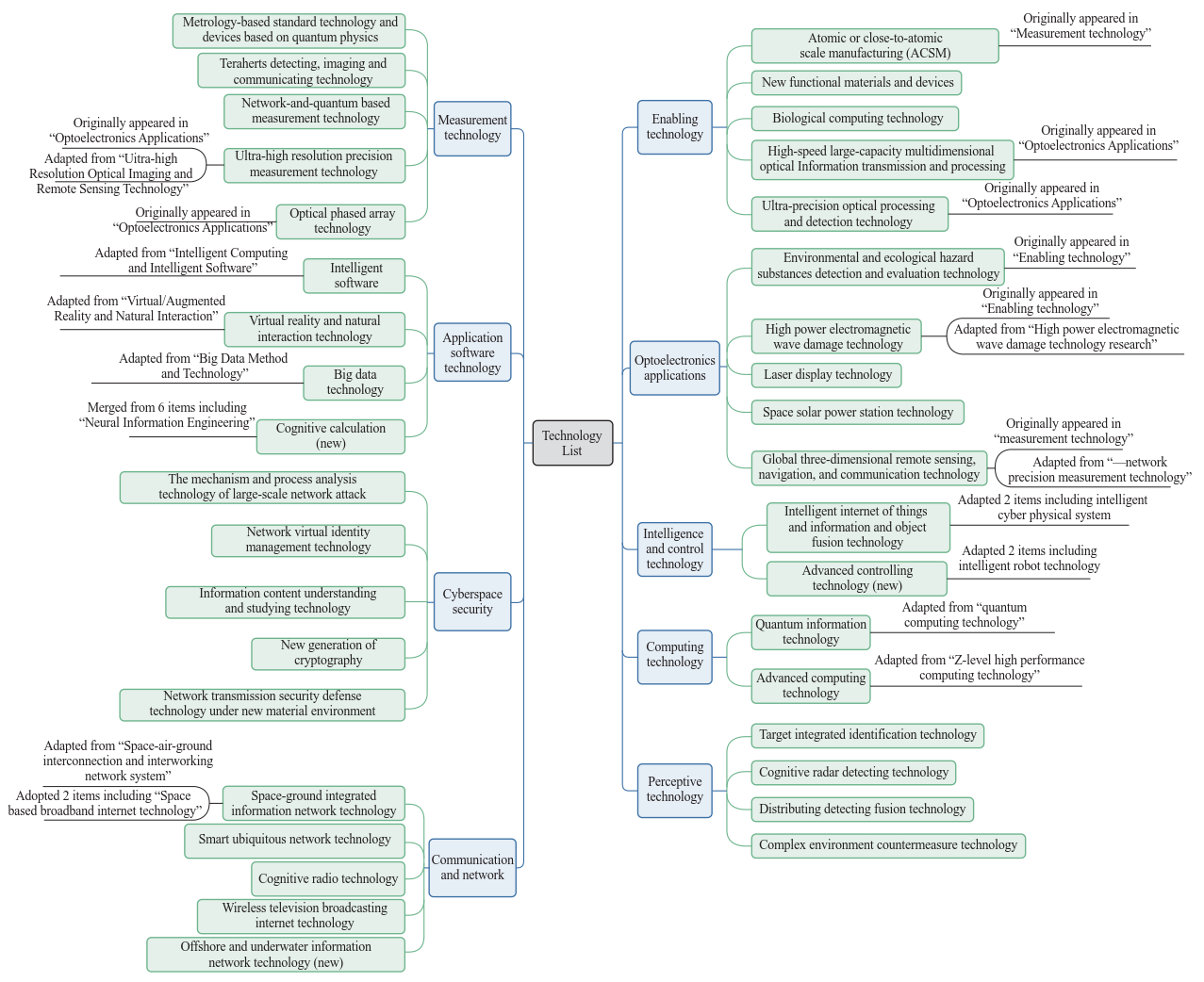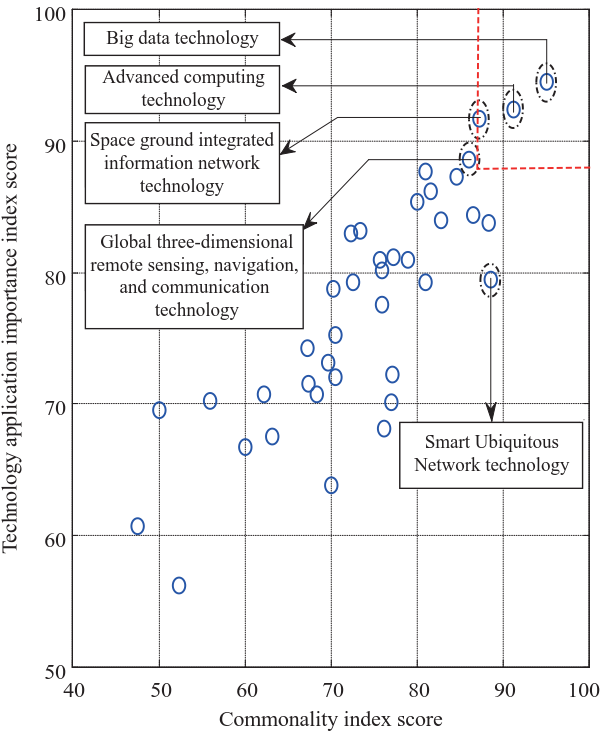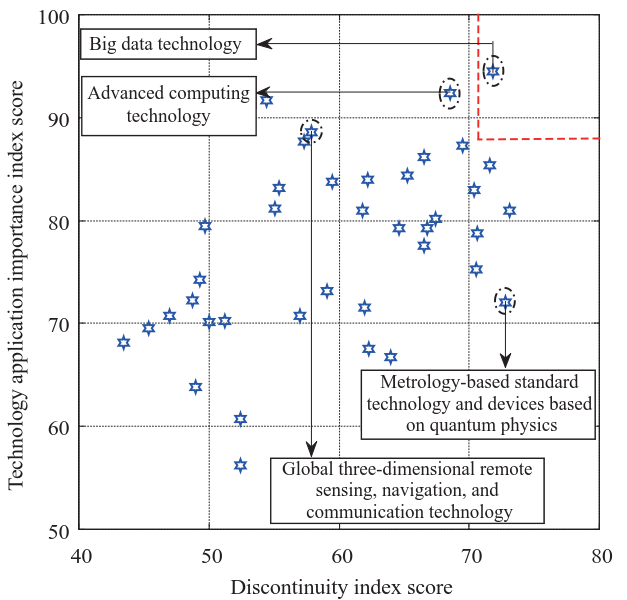《1 Introduction》
1 Introduction
Science and technology are the primary productive forces upon which national progress and human wellbeing are increasingly reliant. How to precisely grasp technological development trends, predict future directions, and determine key areas to enable the investment of limited resources toward optimal achievements, have become the key questions to be answered for major scientific research institutions all over the world. Technology foresight is mainly used for the screening of key technologies through orderly exploration, thereby enhancing national scientific and technological development, as well as economic and social progress [1]
The cross-fusion of information technology, biological technology, new energy technology, and new material technology is triggering a new round of scientific and technological revolution, as well as a new industrial revolution, which will bring new opportunities to society. As the most dynamic, impactful, and innovative integrated research field, information technology is not only an important foundation of national scientific strength and military capability, but also a major pillar of the national economy. Because information technology serves as an “enabling technology,” it has a profound impact on nearly all other fields. China is in a particularly historic stage of deep integration of informatization and industrialization; it is urgent to fully support the role of information technology as a “binder” and “driving engine” for development in various fields. It is of great importance to conduct technology foresight research in the information field,both now and in the future, although, as technology, applied models, and innovative norms progress, changes in the information field will increasingly cause difficulty in prediction.
Based on the project “Research on China’s Engineering Science and Technology Development Strategy 2035,” this study conducts two rounds of Delphi technology foresight investigations in the field of information and electronics. This study coincides with the starting year of the 13th Five Year Plan, which is a key period of increasing discussion in various fields and intensive introduction of planning. A complete analysis is presented in the research report, whereas this paper attempts to present the most noteworthy critical applied technologies, important general technologies, and potentially disruptive technologies within a limited space and from a different perspective. Additionally, although the Delphi investigations should theoretically converge, because the time interval between the two investigations was nearly a full year (first round: August to October 2015; second round: May to July 2016), a brief comparative study on the key technological differences between the two rounds of research results will be conducted herein.
《2 Index design and list determination》
2 Index design and list determination
《2.1 Evaluation index design》
2.1 Evaluation index design
Technology foresight research originated in the United States, and was further studied, developed, and improved in Japan, eventually expanding to European countries [2–14]. Technology foresight mainly refers to expert experience, and is based on the statistical analysis of reference documents and patents, or modeling and combined methods. Of these, the Delphi inquiry method has become an important support tool for countries carrying out medium- and long-term development strategies for science and technology all over the world [8,9,15]. It is a common method used to consult experts, using back-to-back communication, regarding predictions and suggestions. The hallmarks of the method are anonymity, feedback, convergence, and statistics, and it has been progressively systematized and institutionalized [4–7]. In 2015, a project entitled “Research on China’s Engineering Science and Technology Development Strategy 2035” was undertaken jointly by the Chinese Academy of Engineering (CAE) and the committee of the National Natural Science Foundation of China (NSFC). The event focused on 11 different areas, including electronic information, advanced manufacturing, and public security. The teams performed two rounds of Delphi technology foresight research, each lasting for three months.
The evaluation index system used in the research project is presented in Fig. 1. It can be divided into two parts: analysis of technological factors, and analysis of application factors. The analysis of technological factors includes four evaluation indices: core index, driving index, commonality index, and discontinuity index. The analysis of application factors includes three indices: economic development importance, social development importance, and national defense security importance. The indices of “technology itself importance” and “technology application importance” are derived from the familiarity levels of participating experts [16]. The calculation method used to obtain the nine indices in this study is consistent with that used in the project titled “Research on China’s Engineering Science and Technology Development Strategy 2035.” However, the method adopted in this research for the selection of “critical applied technologies,” “important general technologies,” and “potentially disruptive technologies” uses a ranking method rather than score weighting. For example, to select a critical applied technology, both “technology itself importance” and “technology application importance” should rank in the top five. The reason for using such a screening method is to raise the significance threshold, and highlight the more prominent items. This method is a custom paradigm based on the statistical results of specific investigations.
《Fig. 1. 》

Fig. 1. Schematic diagram of the evaluation index system.
《2.2 Technology list determination》
2.2 Technology list determination
The first round used 9 main directions and 51 alternative technology lists as inputs [17]. The second round condensed the list and yielded 39 items. Of these technology items, 8 have been divided into various fields, 9 have been renamed, 13 have been transformed into other technology items (the item “intelligent information service and key technology of information assurance” has been transformed into other items that are not marked in Fig. 2), two merging technology items have been added, two have been deleted (“super Wi-Fi and multi-antenna broadcast technology,” and “Hilbert space method and technology,” both of which are not marked in Fig. 2), and one basic technology item has been added. A complete breakdown of the technology list is presented in Fig. 2.
《Fig. 2. 》

Fig. 2. Technology list.
《3 Analysis of the investigation results》
3 Analysis of the investigation results
Due to the convergence of the Delphi method, analysis will be based on the results of the second round of investigative research. The emphasis in this paper is on individually analyzing critical applied technologies, important general technologies, and potentially disruptive technologies.
《3.1 Critical applied technologies》
3.1 Critical applied technologies
Fig. 3 illustrates the selection process for critical applied technologies under the assessment system used in this research (based on the results of the second round of Delphi research). It can be seen from the figure that “big data technology,” “advanced computing technology,” and “space-ground integrated information network technology” are the most important critical applied technologies. The “new functional materials and devices” technology performs well based on the technology itself importance index and the “global three-dimensional remote sensing, navigation, and communication technology” has strong performance based on the technology application importance index, but neither rank in the top five for both indices. Therefore, the two technology items mentioned above do not meet the selection criteria for this study.
《Fig. 3. 》

Fig. 3. Schematic diagram of the critical applied technology screening (top 5).
《3.2 Important general technologies》
3.2 Important general technologies
Fig. 4 illustrates the selection process for the important general technologies. “Big data technology,” “advanced computing technology,” and “space-ground integrated information network technology” are still the most important general technologies. “Global three-dimensional remote sensing, navigation, and communication technology” has a strong score on the technology application importance index. “Smart ubiquitous network (SUN) technology” has strong commonality but ranks nineteenth on the technology application importance index. Therefore, neither technology passed the screening.
《Fig. 4.》

Fig. 4. Schematic diagram of the important general technology screening (top 5).
3.3 Potentially disruptive technologies
Similarly, potentially disruptive technology can be evaluated through the indices of discontinuity and “technology application importance.” Fig. 5 presents the schematic diagram of the potentially disruptive technology screening. Through comprehensive evaluation, we have determined that “big data technology” is a potentially disruptive technology that deserves special focus. “Metrology-based standard technology and devices based on quantum physics” has strong discontinuity, while “advanced computing technology” scores high on the technology application importance index. However, the two index rankings are not consistent across both items.
《Fig. 5. 》

Fig. 5. Schematic diagram of the potentially disruptive technology screening (top 5).
《4 Comparison of the two rounds of investigation》
4 Comparison of the two rounds of investigation
From the analysis of the results of the second round of investigation, “big data technology,” “advanced computing technology,” and “space-ground integrated information network technology” are the most significant technologies. Additionally, “new functional materials and devices,” “global three-dimensionalremote sensing, navigation, and communication technology,” and “metrology-based standard technology and devices based on quantum physics” also hold important positions. This section focuses on the differences in statistical conclusions between the two rounds of surveys.
《4.1 Significance of the technology itself》
4.1 Significance of the technology itself
The comprehensive index of technology itself importance is based on a core factor and a driving factor. Table 1 presents the technology items and the scores of those that rank in the top five for the comprehensive index of technology itself importance (ranked in the order from the second round of statistical results). The study results show that “big data technology” in the subfield of “application software technology” achieves the highest score (93.95), followed by “advanced computing technology” in the sub-field of “computing technology” (91.07) and the “new functional materials and devices” in the sub-field of “enabling technology” (90.63). Through further analysis, we have determined that “big data technology” only ranked 21st (78.62) in the first round of research and shows a rapid increase in ranking in the second round of research, where it ranked in the top five for four different indices. In contrast, “advanced computing technology” (ranked second in both rounds of investigation) and “new functional materials and devices” (ranked fourth in the first round and third in the second round) have relatively stable rankings and scores across the two rounds of investigation.
Table 1. Top five technology items based on the technology itself importance index (according to the ranking order that emerged from the second round).
《Table 1. 》

《4.2 Significance of technology application》
4.2 Significance of technology application
The comprehensive index of technology application importance is based on the three important indices of economic development importance, social development importance, and national defense security importance. Table 2 presents the technology items and lists the top five scores for the technology application importance index (ranked in the order that emerged from the second round of statistical results). The results show that “big data technology” (94.56), “advanced computing technology” (92.44), and “space-ground integrated information network technology” ranked as the top three indices. However, “big data technology” only ranked seventh (84.86) in the first round of investigation. “Space-ground integrated information network technology” only ranked eighteenth in the first round, which is a very dramatic change. “Advanced computing technology” (ranked second in both rounds) and “global three-dimensional remote sensing, navigation, and communication technology” (ranked fifth in round one, and fourth in round two) had relatively stable rankings and scores across both rounds.
Table 2. Top five technology items based on the technology application importance index (according to the ranking order that emerged from the second round).
《Table 2.》

《4.3 Analysis of realization time and R&D level》
4.3 Analysis of realization time and R&D level
The realization times of technology items from both rounds are compared and analyzed from the perspectives of “World,” “China,” and “Society.” As shown in Fig. 6, the experts in the second round of the survey believe that “advanced computingtechnology” will be realized four or five years earlier than the estimates of experts in the first round. Additionally, they believe that “space-ground integrated information network technology” will be realized one or three years later than the estimates of experts in the first round, even though the realization time of technology items in China will be two years in advance.
For the R&D level, experts generally believe that advanced computing represents a high level of R&D technology projects, which partially explains the optimistic estimate of time realization in the second round. For “big data technology,” although some progress has been made in the past year since the first round, experts have found that there are still various obstacles concerning the R&D of this technology. The significance of these obstacles is becoming increasingly apparent to experts. Therefore, the predicted realization time for this technology has been extended. As a potentially disruptive technology, “big data technology” should still be given significant attention, despite its currently low level of R&D. Further support for technological R&D should be provided in order to seize the opportunity to achieve a major breakthrough. Additionally, it is noteworthy that in the second round of investigation, the “space-ground integrated information network technology” score increased by one-third (nine points). The reason for this, as far as we can determine, is closely related to China’s current Internet power strategy and the implementation of major projects in the field of scientific and technological innovation.
《5 Conclusions》
5 Conclusions
A more specific screening and analysis method for key technologies was detailed in this paper. By analyzing the list of 39 technology items in the field of information and electronics, we have identified the likely critical applied technologies, important general technologies, and potentially disruptive technologies through to the year 2035. The identified information and electronics fields should be given high development priority. A comparative study of the technology items relevant to “big data technology,” “advanced computing technology,” and “spaceground integrated information network technology” was carried out from the perspective of their technological and application significance, as well as their realization time and R&D level. A brief summary of the issues currently confronting these three technological areas, and predictions for their future development trends, was presented. Advanced computing technology has a solid foundation in China and requires continuous investment to realize the leapfrog development changes that will change its status from “running after” to “running together” and, eventually, to “leading the race.” Meanwhile, as a potentially disruptive technology, the universal value of “big data technology” as the pillar of China’s economic and social development is recognized. The opportunity for potential leapfrog development should be seized. The investment in “space-ground integrated information network technology” has significantly increased in recent years, whichis expected to rapidly improve China’s competitiveness in this field. This paper provides a reference point for the deployment of the important technical directives from China’s engineering science and technology development strategy through to the year 2035, and for future technology foresight of China.














 京公网安备 11010502051620号
京公网安备 11010502051620号




